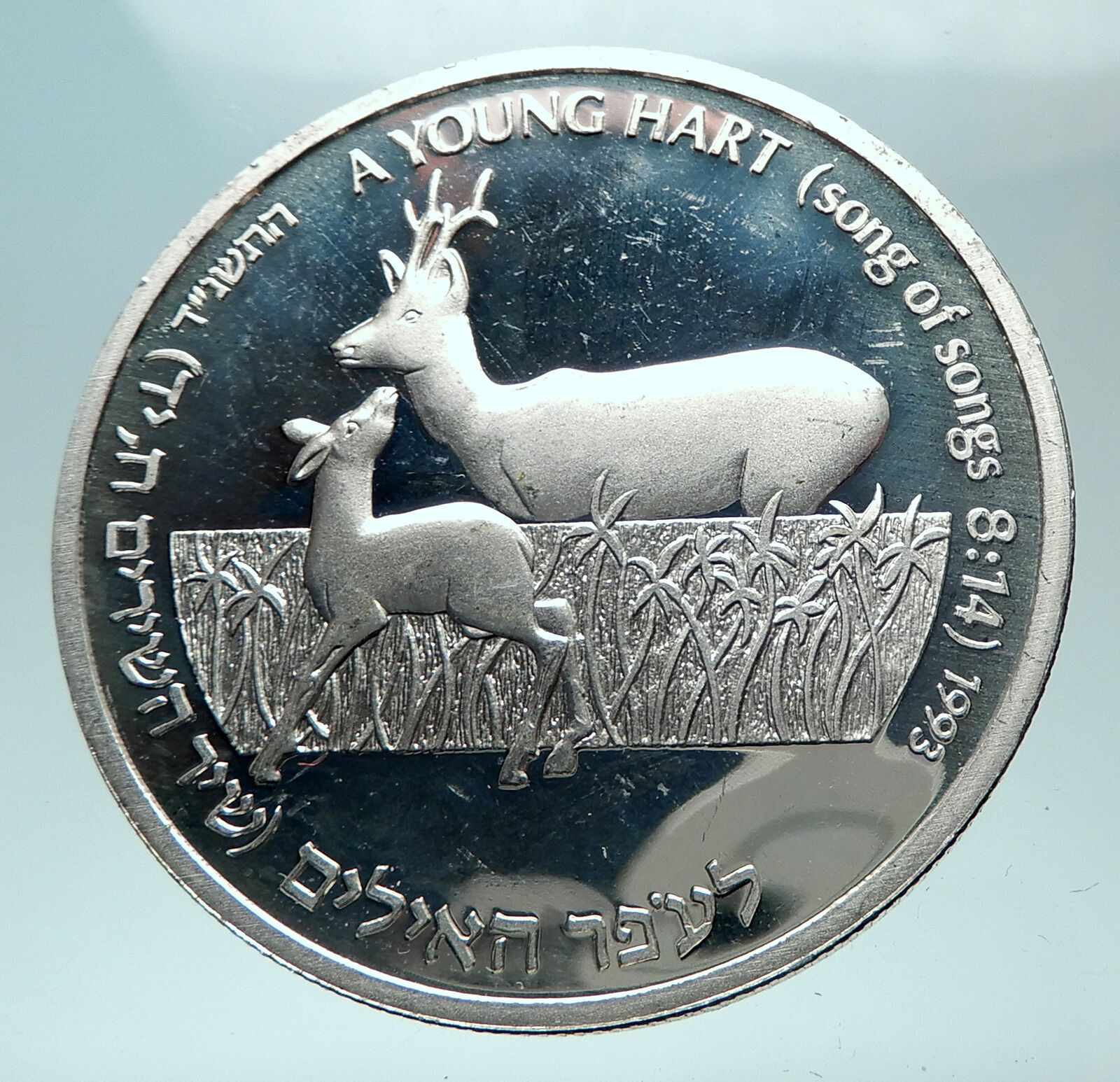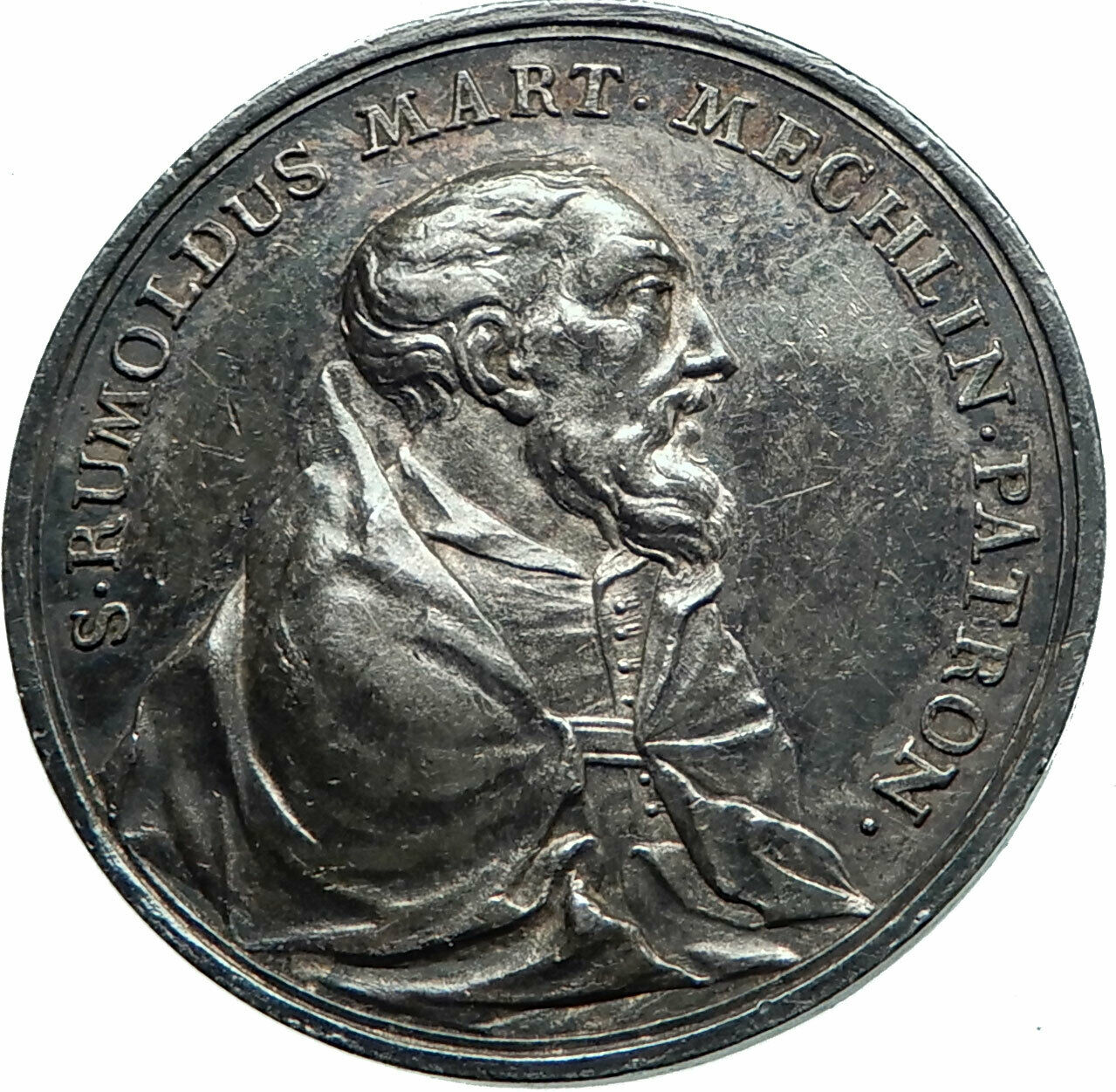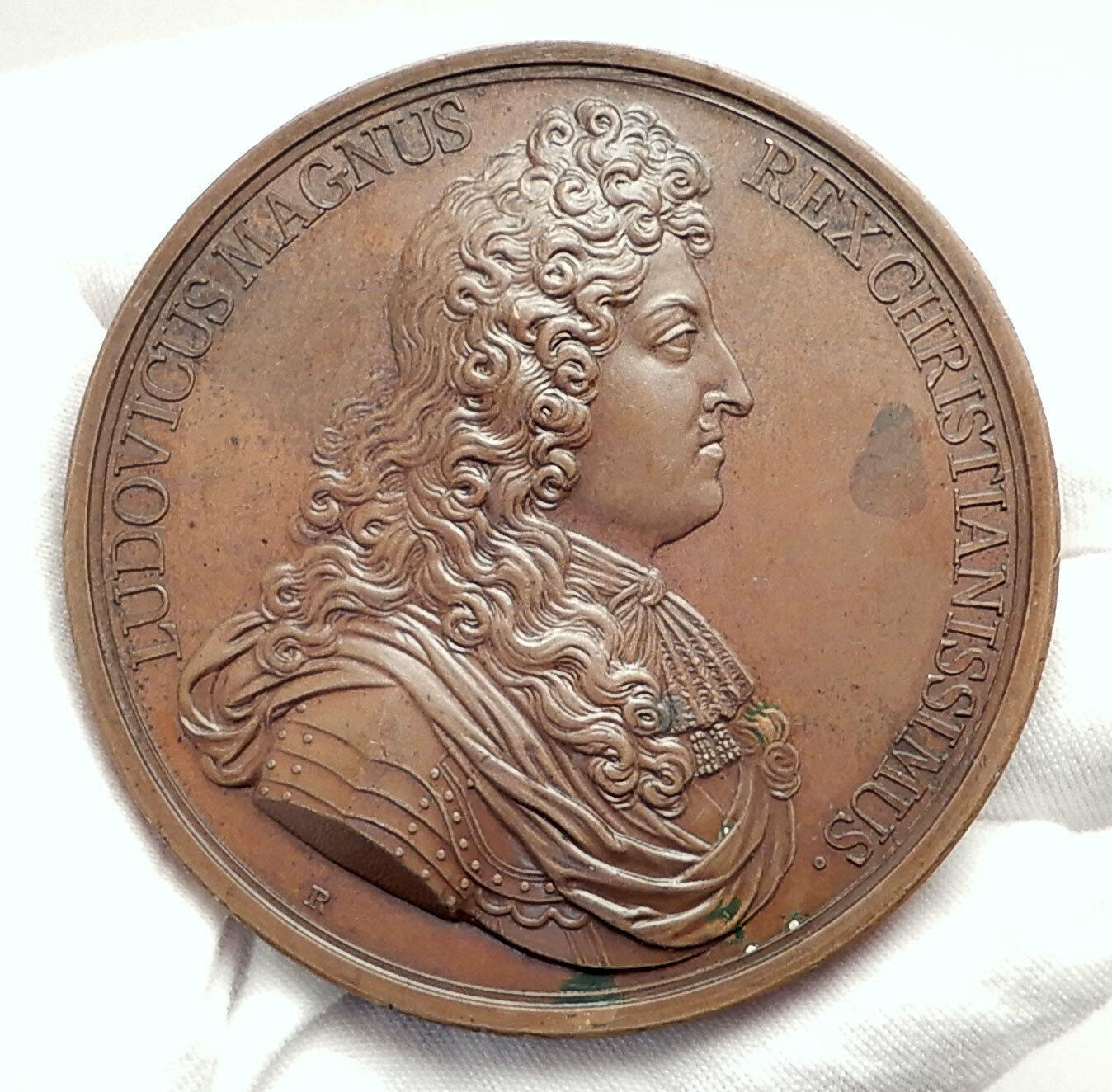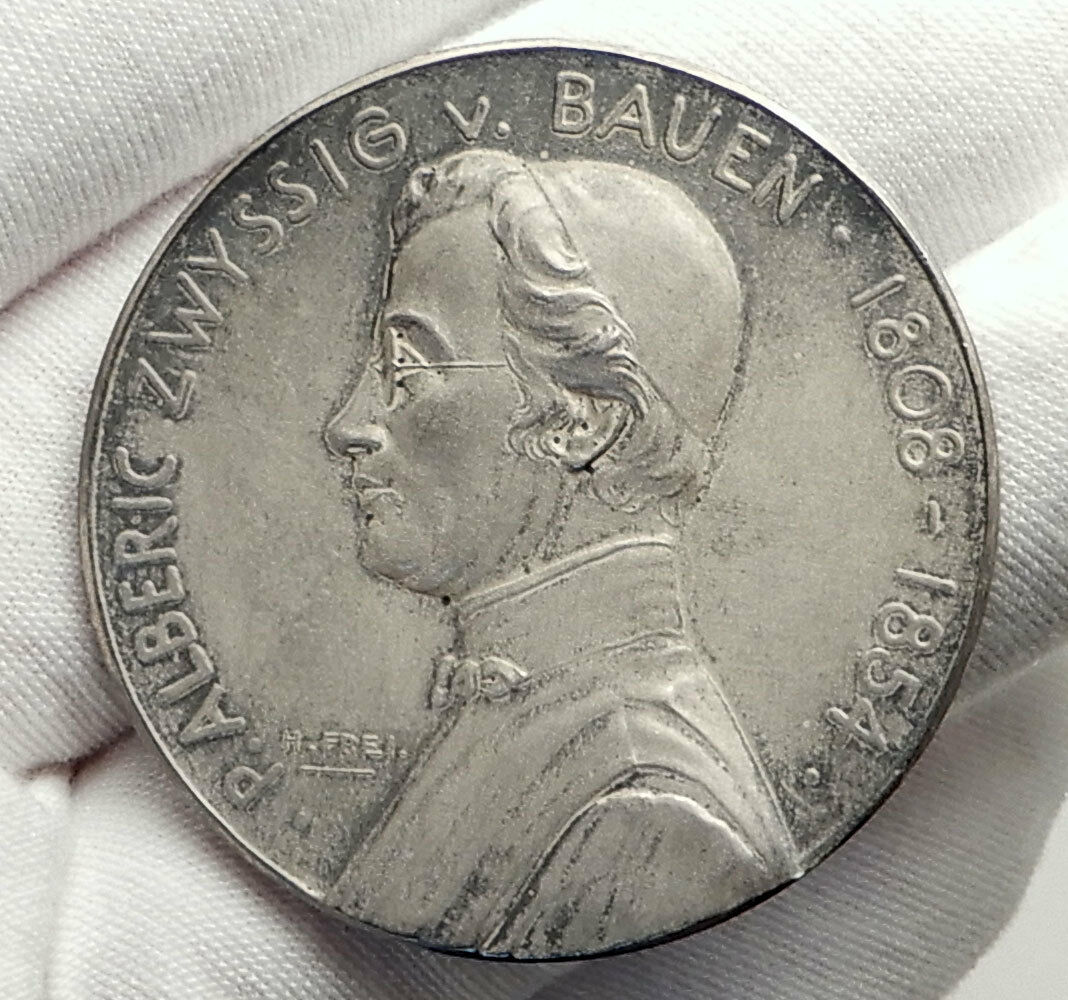|
Panamerican World Exposition of 1901
1900’s Bronze Medal 19mm x 36mm (3.17 grams)
PAN.AMERICAN EXPOSITION 1901 TEMPLE OF MUSIC, Tower facade.
BUILDING IN WHICH PRESIDENT WM. MCKINLEY WAS SHOT. SEPT. 6, 1901. Inscription.
You are bidding on the exact item pictured, provided with a Certificate of Authenticity and Lifetime Guarantee of Authenticity.
William McKinley, the 25th President of the United States, was shot on the grounds of the Pan-American Exposition at the Temple of Music in Buffalo, New York, on September 6, 1901, six months into his second term. He was shaking hands with the public when anarchist Leon Czolgosz shot him twice in the abdomen. McKinley died on September 14 of gangrene caused by the wounds. He was the third American president to be assassinated, following Abraham Lincoln in 1865 and James A. Garfield in 1881.
McKinley enjoyed meeting the public and was reluctant to accept the security available to his office. Secretary to the President George B. Cortelyou feared that an assassination attempt would take place during a visit to the Temple of Music and took it off the schedule twice, but McKinley restored it each time.
Czolgosz had lost his job during the economic Panic of 1893 and turned to anarchism, a political philosophy adhered to by recent assassins of foreign leaders. He regarded McKinley as a symbol of oppression and was convinced that it was his duty as an anarchist to kill him. He was unable to get near the president during an earlier visit, but he shot him twice as McKinley reached to shake his hand in the reception line at the temple. One bullet grazed McKinley; the other entered his abdomen and was never found.
McKinley initially appeared to be recovering, but he took a turn for the worse on September 13 as his wounds became gangrenous, and he died early the next morning; he was succeeded by his vice president, Theodore Roosevelt. Czolgosz was sentenced to death in the electric chair, and Congress passed legislation to officially charge the Secret Service with the responsibility for protecting the president.
 The Pan-American Exposition was a World’s Fair held in Buffalo, New York, United States, from May 1 through November 2, 1901. The fair occupied 350 acres (0.55 sq mi) of land on the western edge of what is now Delaware Park, extending from Delaware Avenue to Elmwood Avenue and northward to Great Arrow Avenue. It is remembered today primarily for being the location of the assassination of United States President William McKinley at the Temple of Music on September 6, 1901. The exposition was illuminated at night. Thomas A. Edison, Inc. filmed it during the day and a pan of it at night. The Pan-American Exposition was a World’s Fair held in Buffalo, New York, United States, from May 1 through November 2, 1901. The fair occupied 350 acres (0.55 sq mi) of land on the western edge of what is now Delaware Park, extending from Delaware Avenue to Elmwood Avenue and northward to Great Arrow Avenue. It is remembered today primarily for being the location of the assassination of United States President William McKinley at the Temple of Music on September 6, 1901. The exposition was illuminated at night. Thomas A. Edison, Inc. filmed it during the day and a pan of it at night.
 The event was organized by the Pan-American Exposition Company, formed in 1897. Cayuga Island was initially chosen as the place to hold the Exposition because of the island’s proximity to Niagara Falls, which was a huge tourist attraction. When the Spanish–American War broke out in 1898, plans were put on hold. After the war, there was a heated competition between Buffalo and Niagara Falls over the location. Buffalo won for two main reasons. First, Buffalo had a much larger population—with roughly 350,000 people, it was the eighth-largest city in the United States. Second, Buffalo had better railroad connections—the city was within a day’s journey by rail for over 40 million people. In July 1898, Congress pledged $500,000 for the Exposition to be held at Buffalo. The “Pan American” theme was carried throughout the event with the slogan “commercial well being and good understanding among the American Republics.” The advent of the alternating current power transmission system in the US allowed designers to light the Exposition in Buffalo using power generated 25 miles (40 km) away at Niagara Falls. The event was organized by the Pan-American Exposition Company, formed in 1897. Cayuga Island was initially chosen as the place to hold the Exposition because of the island’s proximity to Niagara Falls, which was a huge tourist attraction. When the Spanish–American War broke out in 1898, plans were put on hold. After the war, there was a heated competition between Buffalo and Niagara Falls over the location. Buffalo won for two main reasons. First, Buffalo had a much larger population—with roughly 350,000 people, it was the eighth-largest city in the United States. Second, Buffalo had better railroad connections—the city was within a day’s journey by rail for over 40 million people. In July 1898, Congress pledged $500,000 for the Exposition to be held at Buffalo. The “Pan American” theme was carried throughout the event with the slogan “commercial well being and good understanding among the American Republics.” The advent of the alternating current power transmission system in the US allowed designers to light the Exposition in Buffalo using power generated 25 miles (40 km) away at Niagara Falls.
Assassination of President McKinley
 The exposition is most remembered because United States President William McKinley was assassinated by an anarchist, Leon Czolgosz, at the Temple of Music on September 6, 1901. The President died eight days later on September 14 from gangrene caused by the bullet wounds. The exposition is most remembered because United States President William McKinley was assassinated by an anarchist, Leon Czolgosz, at the Temple of Music on September 6, 1901. The President died eight days later on September 14 from gangrene caused by the bullet wounds.
On the day prior to the shooting, McKinley had given an address at the exposition, which began as follows:
Expositions are the timekeepers of progress. They record the world’s advancement. They stimulate the energy, enterprise, and intellect of the people; and quicken human genius. They go into the home. They broaden and brighten the daily life of the people. They open mighty storehouses of information to the student.
The newly developed X-ray machine was displayed at the fair, but doctors were reluctant to use it on McKinley to search for the bullet because they did not know what side effects it might have had on him. Also, the operating room at the exposition’s emergency hospital did not have any electric lighting, even though the exteriors of many of the buildings were covered with thousands of light bulbs. Doctors used a pan to reflect sunlight onto the operating table as they treated McKinley’s wounds.
|





 The Pan-American Exposition was a World’s Fair held in Buffalo, New York, United States, from May 1 through November 2, 1901. The fair occupied 350 acres (0.55 sq mi) of land on the western edge of what is now Delaware Park, extending from Delaware Avenue to Elmwood Avenue and northward to Great Arrow Avenue. It is remembered today primarily for being the location of the assassination of United States President William McKinley at the Temple of Music on September 6, 1901. The exposition was illuminated at night. Thomas A. Edison, Inc. filmed it during the day and a pan of it at night.
The Pan-American Exposition was a World’s Fair held in Buffalo, New York, United States, from May 1 through November 2, 1901. The fair occupied 350 acres (0.55 sq mi) of land on the western edge of what is now Delaware Park, extending from Delaware Avenue to Elmwood Avenue and northward to Great Arrow Avenue. It is remembered today primarily for being the location of the assassination of United States President William McKinley at the Temple of Music on September 6, 1901. The exposition was illuminated at night. Thomas A. Edison, Inc. filmed it during the day and a pan of it at night. The event was organized by the Pan-American Exposition Company, formed in 1897. Cayuga Island was initially chosen as the place to hold the Exposition because of the island’s proximity to Niagara Falls, which was a huge tourist attraction. When the Spanish–American War broke out in 1898, plans were put on hold. After the war, there was a heated competition between Buffalo and Niagara Falls over the location. Buffalo won for two main reasons. First, Buffalo had a much larger population—with roughly 350,000 people, it was the eighth-largest city in the United States. Second, Buffalo had better railroad connections—the city was within a day’s journey by rail for over 40 million people. In July 1898, Congress pledged $500,000 for the Exposition to be held at Buffalo. The “Pan American” theme was carried throughout the event with the slogan “commercial well being and good understanding among the American Republics.” The advent of the alternating current power transmission system in the US allowed designers to light the Exposition in Buffalo using power generated 25 miles (40 km) away at Niagara Falls.
The event was organized by the Pan-American Exposition Company, formed in 1897. Cayuga Island was initially chosen as the place to hold the Exposition because of the island’s proximity to Niagara Falls, which was a huge tourist attraction. When the Spanish–American War broke out in 1898, plans were put on hold. After the war, there was a heated competition between Buffalo and Niagara Falls over the location. Buffalo won for two main reasons. First, Buffalo had a much larger population—with roughly 350,000 people, it was the eighth-largest city in the United States. Second, Buffalo had better railroad connections—the city was within a day’s journey by rail for over 40 million people. In July 1898, Congress pledged $500,000 for the Exposition to be held at Buffalo. The “Pan American” theme was carried throughout the event with the slogan “commercial well being and good understanding among the American Republics.” The advent of the alternating current power transmission system in the US allowed designers to light the Exposition in Buffalo using power generated 25 miles (40 km) away at Niagara Falls. The exposition is most remembered because United States President William McKinley was assassinated by an anarchist, Leon Czolgosz, at the Temple of Music on September 6, 1901. The President died eight days later on September 14 from gangrene caused by the bullet wounds.
The exposition is most remembered because United States President William McKinley was assassinated by an anarchist, Leon Czolgosz, at the Temple of Music on September 6, 1901. The President died eight days later on September 14 from gangrene caused by the bullet wounds.




